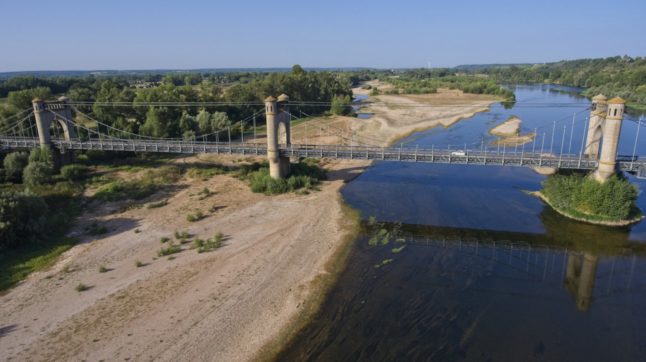The 80 turbines will enter full service by the end of the year, and Macron has previously set a goal of about 50 offshore windfarms “providing up to 40 gigawatts” in service by 2050.
Following the belated inauguration of the country’s first offshore windfarm, another at Fécamp is due to start generating power in 2023. Sites in Saint-Brieuc, Fécamp and Courseulles-sur-Mer are set to enter service in 2024.
But France has a long way to go to meet the President’s target, and to catch up with its European neighbours. Before the Saint-Nazaire wind farm (‘parc éolien’ – en français), France had only one floating offshore wind farm off the coast of Le Croisic.
At Thursday’s inauguration event, Macron was to set out the “main lines” of a bill to accelerate France’s renewable energy programme, which will be presented to the Council of Ministers on Monday, September 26th.
READ ALSO France generates electricity from offshore wind farm for the first time
There is no doubt that renewable energy production in France is accelerating. On top of the 80 offshore turbines at Saint-Nazaire, just under 9,000 onshore turbines are currently producing electricity in France – eight years ago, around half that number of land-based turbines were operational.
The first turbines in France were only installed in the 1990s – by which time countries like Germany and Denmark already had large-scale operations in place.
More turbines would be in operation now in France, but for the lengthy planning process and appeals against projects, which have delayed construction for several years.
Hauts-de-France and Grand-Est, account for 50 percent of the wind-produced power in France. Île-de-France, Provence-Alpes-Côte-d’Azur, and Corsica lag behind the other regions.
READ MORE: Energy shortages: What’s the problem with France’s nuclear industry?
In 2020, wind produced just eight percent of its electricity from wind, behind hydroelectric stations, while nuclear power generated nearly 70 percent of the country’s electricity.
Wind power accounted for 20 percent of electricity generation in Germany and Spain, while the UK was at 30 percent in 2020, Portugal produced 40 percent, and Denmark’s windfarms met 60 percent of the country’s electricity needs.



 Please whitelist us to continue reading.
Please whitelist us to continue reading.
Member comments